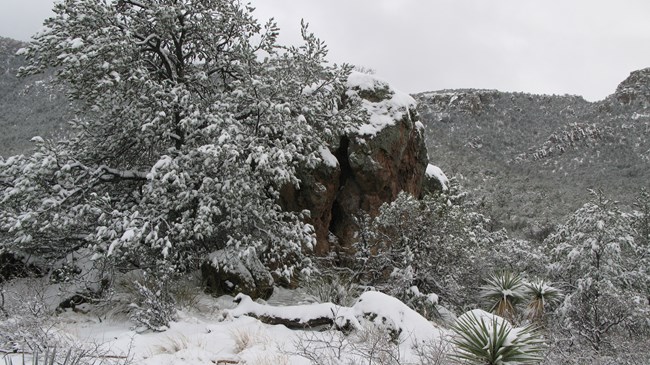
NPS/ S. Hart Where can you go to experience different seasons in the same location, on the same day? Chiricahua National Monument! As a Sky island Chiricahua ranges in elevation. It can be warm at the visitor center (at 5,400 feet/ 1646 meters), but cool and breezy at Massai Point (6,800 feet/ 2073 meters). There can be rain at the visitor center, but snow at Echo Canyon Trailhead. 
NPS/ D. Young Prolonged strong winds occur during spring and summer, and are often associated with high-pressure systems. Wind speeds have been recorded as high as 60 miles per hour (97 kilometers per hour) and often will cause large trees to be uprooted and can cause wildfires grow quickly. Predominant daytime wind direction is from the southwest, but high-pressure systems will cause daytime wind direction to change to an easterly flow. Due to high topographical relief, upcanyon winds prevail during the daytime, while downcanyon winds occur at night. Average wind speed ranges from 1-7 miles per hour (1.6-11 kilometers per hour). 2013 Visitor Center Parking Lot Flooding 

Left image
Right image
August 2012 Flood 

Left image
Right image
|
Last updated: December 13, 2018
